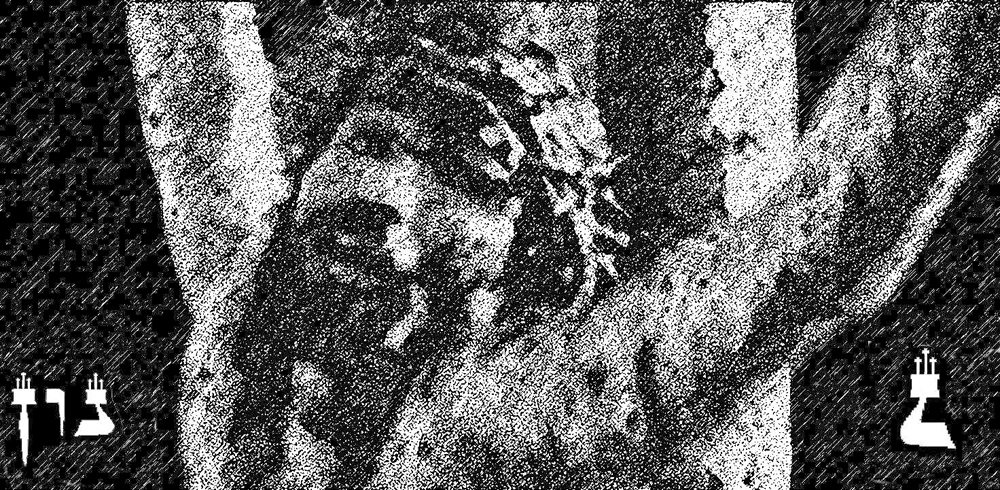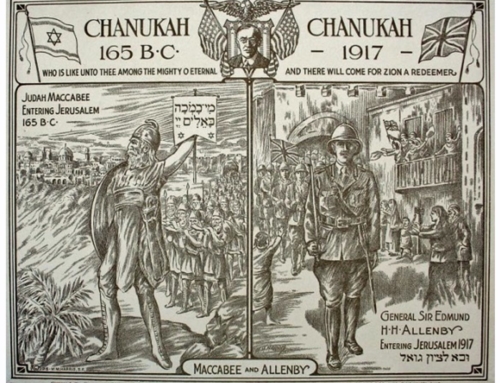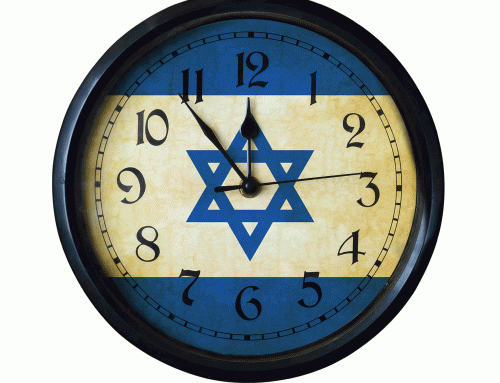By John David Pitcher Jr., MD
In the Hebrew Scriptures, there are nine verses where “Inverted Nuns” (pronounced “noons”) are used as annotations. There is no consensus in either Jewish or Christian commentaries regarding the explanation of their purpose.
Two “Inverted Nuns” occur before and after Numbers 10:35-36, “Moses’ Cry of Grace” that occurs between the “Preparation of God’s People” (Numbers 1:1-10:34) and the “Presentation of God’s Grace” (Numbers 11:1-36:13) in that book of the Torah.
What is an “Inverted Nun”?
The name David with its dalet-vav-dalet (4+6+4) in Hebrew has the numeric value of 14, and the Nun is the fourteenth letter of the Hebrew Aleph-Bet. The letter Nun therefore is considered a letter symbolizing the Messiah, the Son of David, humble (bent) in its medial form at the first or middle of a word and righteous (upright) in its final form of a word (cf. James 4:10) and foreshadowed by Moses’ life. The spelling of the letter nun has both the medial and final forms of the letter. (In the illustration above, see the insert on the left of the sketch of the Messiah on the Cross).
The letter nun is one of the Hebrew letters with a tagin, a crown on the top of the letter, three marks that look like zayins that extend upward from the letter. (The other letters that typically have a tagin are gimmel, zayin, tet, ayin, tsade, and shin.
In the inserts in the sketch, I’ve taken the liberty to modify the zayins slightly. A single zayin on top of a letter is considered the “tittle” of Matthew 5:18.)
The “Inverted Nun” then, is the Rejected Messiah (see the insert on the right of the sketch, inspired from Mel Gibson’s “The Passion of the Christ” when the Messiah looked at the second thief and accepted him that day into Paradise with a “You’re accepted because I was rejected” look of his eyes).
But can we prove that the “Inverted Nuns” annotate the Rejected Messiah using Scripture? And how does that line up to what the Jewish sages have written?
Since Numbers is the Source Text of the Apostle Paul’s Midrash (commentary) that occurs in the letter of 2 Timothy, it should be no surprise that Paul hides in that letter the explanation of the “Inverted Nuns” for us to discover.
(There are 74 words in 2 Timothy that are used in order in 47 sections—some multiple times in a section—out of the 70 Rabbis’ translation of the Hebrew into Greek from 47 sections of the Book of Numbers. There are 83 verses and 1238 total Greek words in 2 Timothy representing a 6% in order word usage, higher if the multiple uses are accounted for, in Paul’s letter to Timothy from the Torah.)
Some commentators have considered the “Inverted Nuns” to be a punctuation mark before verse 35 and after verse 36. Many Jewish sages however, based on the Talmud (Shabbat 115b, 116a) have said that the 85 letters of Numbers 10:35-36 encompassed by the “Inverted Nuns” comprise a separate book of the Torah: (1, footnote below)
Genesis
Exodus
Leviticus
Numbers 1:1-10:34
Numbers 10:35-36
Numbers 11:1-36:13
Deuteronomy
These are said by many Jewish sages to be “the seven pillars of wisdom.”
1 Wisdom has built her house,
She has carved out her seven pillars;
2 She has prepared her meat,
She has mixed her wine,
She has also set her table.
3 She has sent out her maidens,
She cries out from the highest places of the city:
4 “Whoever is simple, let him turn in here!”
As for him who is void of understanding, she says to him,
5 “Come, eat some of my bread
Drink some of the wine which I have mixed!
6 Leave your simple ways, and live,
Walk in the way of understanding. (Proverbs 9:1-6)
The sages say that part of the Torah representing Numbers 10:35-36 is “yet to be written.”
Note the English translation of the Hebrew of Numbers 10:35-36, “Moses’ Cry of Grace” (verse 35 is quoted by David in Psalm 68:1):
“When the ark went forward, Moses said, ‘Rise up, LORD, and let your enemies be scattered! Let those who hate you flee before you!’ When it rested, he said, ‘Return, LORD, to the ten thousands of the thousands of Israel.’”
The verb “rest” (katapausis) in Numbers 10:36 is used first in the 70 Rabbis’ translation of the Hebrew into Greek (the Septuagint, LXX) in this verse setting the tone of its meaning throughout Scripture and has eight occurrences in the LXX and nine occurrences in the New Testament:
Numbers 10:36 The Ark rested
Deuteronomy 12:9 No rest doing what is right in every man’s eyes
1 Kings 8:56 Solomon’s blessing: “Blessed be the LORD, who has given rest to his people Israel…”
1 Chronicles 6:31 The Ark came to rest
Psalm 95:11 “They shall not enter My rest”
Psalm 132:14 Zion is God’s resting place forever
Isaiah 66:1 “Where is the place of My rest?”
Acts 7:49 Stephen quoting Isaiah 66:1 prior to being martyred for his faith in Messiah
Hebrews 3:11, 18 Paul quoted Psalm 95:11
Hebrews 4:1, 3 [2X], 5, 10, 11 Paul with further quotations and explanations of Psalm 95:11
2 Timothy 1:14 is a Midrash of Numbers 10:29-36 and 2 Timothy 1:15 is a Midrash of Numbers 11:1-6.
Although only one word is common in the first of the two sections, the thought of each section of the Midrash is similar to the Source Text.
In Numbers 10:29-36, Moses’ brother-in-law Hobab (meaning ‘to hide’ as in ‘to cherish’), a Gentile was offered to partake in the “good things” promised to the Israelites and in 2 Timothy 1:14 Paul wrote, “That good thing which was committed to you, guard through the Holy Spirit who dwells in us.” (The same Greek word “good” is used in both 2 Timothy and Numbers.) Through Midrash, Paul explains that “good thing” is the rest of Messiah.
In Numbers 11:1-6, immediately after “Moses’ Cry of Grace” Moses records “The people were complaining in the ears of the LORD. When the LORD heard it, his anger burned; and the LORD’s fire burned among them, and consumbed some of the outskirts of the camp. The people cried to Moses; and Moses prayed to the LORD, and the fire abated. The name of that place was called Taberah, because the LORD’s fire burned among them.” (Taberah means “burning”.) In the following verses the people continue and complain about the provision of food consisting only of the miraculous manna. Paul records in 2 Timothy 1:15, “This you know, that all who are in Asia turned away from me, of whom are Phygelus (meaning “fugitive”) and Hermogenes” (meaning “born of Mercury”).
Certainly the similarity between the Midrash and the Source Text is clear in that those that turn from God as fugitives or revert to false gods will encounter their own Taberah.
So in the very context of Numbers 10:29-11:6 the “good things” that were promised to the Israelites were offered to a Gentile and then the Israelites complained against the LORD, consistent with the idea of rejection of the Messiah.
But what about the other seven “Inverted Nuns”? Where are they and do they add clarification to these “annotations”?
They are all found in Psalm 107 (vv. 23, 24, 25, 26, 27, 28, and 40) the first psalm in Book V of the psalms. Without getting too much into the structure of Psalm 107, a nearly symmetrical psalm with a turning point in verses 21-22, what is obvious is that E’ and B’ lack the details of symmetry within them:
A (1-4) those he gathered from the lands, from east and west, from north and south
B (4-8) they cried out to the LORD in their trouble, he delivered them from their distress, he led them, a city where they could settle, let them give thanks to the LORD for his unfailing love and his wonderful deeds for mankind
C (9) the thirsty, the hungry, they rebelled, despised the plans of the Most High
D (10-16) they cried to the LORD in their trouble, he saved them from their distress, he brought them, let them give thanks to the LORD for his unfailing love and his wonderful deeds for mankind
E (17-20) rebellious ways, they loathed all food, they cried to the LORD in their trouble, he saved them from their distress, he sent out his word and healed them, he rescued them from the grave
F (21) let them give thanks to the LORD for his unfailing love and his wonderful deeds for mankind
F’ (22) Let them sacrifice thank offerings and tell of his works with songs of joy
E’ (23-27) his wonderful deeds
D’ (28-32) they cried out to the LORD in their trouble, and he brought them out of their distress, he stilled the storm to a whisper, give thanks to the LORD for his unfailing love and his wonderful deeds for mankind
C’ (33-38) thirsty ground, the hungry, a city where they could settle
B’ (39-42) wander
A’ (43) the one who is wise heed these things and ponder the loving deeds of the LORD
Those sections that lack the symmetry are associated with the remaining seven Inverted Nuns. Six are before verses 23-28.
In verses 23-28 the psalmist foretells of a time when men would go out on the sea in ships, the waves were lifted up high, and with the up and down motion of the waves they reeled and staggered like drunkards and crying out to the LORD in their distress. In verse 29 the psalmist foretells that he would still the storm to a whisper and hush the waves of the sea and calm the sea.
Has that event ever occurred?
That event occurred twice in history when Yeshua the Messiah calmed the storm and the men that reeled and staggered were his disciples. (Matthew 8:18, 23-27; Mark 4:33-41; Luke 8:22-25 and also Matthew 14:22-33; Mark 6:45-52; and John 6:16-21.) Now the annotations clearly identify a name associated with “The Rejected Messiah”.
What about the ninth and final “Inverted Nun” in Psalm 107:40?
The final “Inverted Nun” in Psalm 107:40 leads up to a prophecy that was quoted by Hosea, the prophet that was instructed by God to marry a woman of harlotry for the Israelites had committed a great harlotry by departing from the LORD. In the final chapter of Hosea, the prophet foretells that Israel would return to the LORD who would heal their waywardness and love them freely.
The use of the final “Inverted Nun” in Psalm 107:40 is unfolded by Hosea in Hosea 14:1-9: Israel will soon accept the Messiah and will say “Return” (cf. Hosea 14:1; not ‘Come’) to us!”, leading up to the quotation of Hosea 14:9 that also ends the psalm in Psalm 107:43:
“Who is wise, that he may understand these things? Who is prudent, that he may know them? For the ways of the LORD are right, and the righteous walk in them; but the rebellious stumble in them.”
The “Inverted Nuns” annotate the “Rejected Messiah” and Scripture identifies him as Yeshua the Messiah.
The persons identified in the A portion of Psalm 107 are further identified in the A’ portion of the psalm’s structure.
Could the part of the Torah “yet to be written” described by the Jewish sages be what Paul explains through Midrash as the account of the “Rejected Messiah” in the New Testament? I’ll leave it up to them to decide!
As for your faith in the “Rejected Messiah,” today is the day to be wise and understand it, to be prudent and know it. Accept his righteous sacrifice for your sin and walk righteously in the rest that he plans for you. He has looked at us in our sinful state and has accepted all of us that accept him, taking while on the Cross the rejection before God of many persons with sin, though he knew not sin. What rejection that must have been for him. What acceptance it is for us!
(1) Milgrom, Jacob. The JPS Torah Commentary Numbers. The Jewish Publication Society, New York 5750/1990, pp. 375-376 notes that Rabbi Judah the Prince claimed that Numbers 10:35-36 form a separate book. That claim is supported by the Mishnah: “A biblical scroll that contains eighty-five letters, as in the section that begins: ‘when the Ark was to set out’… (Mish. Yad. 3:5) and is confirmed by similar signs in Greek papyri and grammatical literature (S. Lieberman, Hellenism in Jewish Palestine. New York: Jewish Theological Seminary of America, 1950, 38-43).
Furthermore, he notes that a medieval manuscript attested that the two verses are associated with “The Prophecy of Eldad and Medad,” the two men that prophesied in the camp (Numbers 11:26-30) and Moses said “Oh, that all the LORD’s people were prophets and that the LORD would put His Spirit upon them!” (Numbers 11:29; cf. 1 Corinthians 14:5)








Leave A Comment